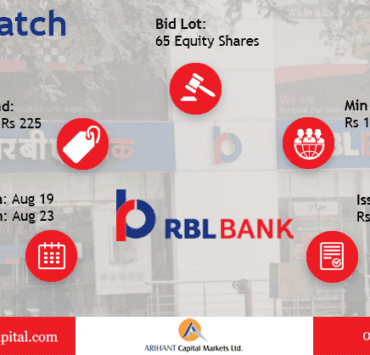Types of Electronic Fund Transfer in India: NEFT, RTGS, IMPS & UPI

Types of Electronic Fund Transfer Methods
Gone are the days when payment and transfer of funds entailed serpentine queues in banks and interaction with forever busy non-attending employees requiring several days altogether. With the advent of the internet and mobile banking, instant and hassle-free electronic funds transfers have now become a reality. Funds can now be transferred instantly from one account to another, within the same bank or to a different bank from your comfort zone – anytime, anywhere. Besides being convenient, electronic transfer modes are considered to be safe, secure and reliable making transferring money much simpler.
Types of electronic funds transfer:
- RTGS (Real Time Gross Settlement)
- NEFT (National Electronics Funds Transfer)
- IMPS (Immediate Payment Service)
- UPI (Unified Payment Interface)
Let’s see what the fund transfer methods are and which method is best for your needs.
RTGS (Real Time Gross Settlement)
Real Time Gross Settlement (RTGS) as the name suggests is a real-time funds transfer system which facilitates you to transfer funds from one bank to another in real-time or on a gross basis. RTGS fund transfer is the fastest process that takes place in real-time. The amount is credited within 30 minutes of the transaction. If for some reason, the money you have sent is not received by the concerned person, then the full amount is returned to your account in just two hours.
Amount Limit: Minimum amount for RTGS transfer is Rs 2 Lakhs and the maximum limit is Rs 10 lakhs
Timings: 8:00 am to 4:30 pm (8:00 am to 1:30 pm on Saturdays)
Information required while making RTGS payment:
- Amount to be remitted
- Remitting customer’s account number which is to be debited.
- Name of the beneficiary bank.
- Name of the beneficiary.
- Account number of the beneficiary.
- IFSC code of the destination bank branch.
NEFT (National Electronic Fund Transfer)
The National Electronic Funds Transfer is a nationwide money transfer system which allows customers the facility to electronically transfer funds from their respective bank accounts to any other account of the same bank or of any other bank network. Individuals, firms, and corporate organizations may use the NEFT system to transfer funds. The transfer of funds is simple, however, it is slower as compared to RTGS. NEFT transactions can be made during banking hours and hourly batches of transactions are made. The credit process takes almost 1 hour.
Amount Limit: No minimum limit and the maximum limit is Rs 10 Lakhs
Timings: 8:00 am to 6:30 pm (8:00 am to 12:30 pm on Saturdays)
Information required while making an NEFT payment:
- Amount to be remitted
- Remitting customer’s account number which is to be debited.
- Name of the beneficiary bank.
- Name of the beneficiary.
- Account number of the beneficiary.
- IFSC code of the destination bank branch.
IMPS (Immediate Payment Service)
The IMPS (Immediate Payment Service) helps you access your bank account and transfer funds instantly and securely to any bank. You can send money using net banking on an internet-powered laptop, PC or mobile. The beneficiary account is credited immediately when a fund transfer request is made from your side. However, to use IMPS, users must register and get MMID from the bank branch. Both parties must have MMIDs for successful transactions.
Amount Limit: No minimum limit and the maximum amount that can be sent using IMPS is Rs 2 Lakhs.
The beneficiary details required by the sender are:
- Beneficiary’s mobile number. The beneficiary’s mobile number should be registered with his bank.
- MMID of the beneficiary customer. Mobile Money Identifier (MMID) is a seven-digit random number issued by the bank upon registration. Remitter (customer who wants to send money) and Beneficiary (customer who wants to receive the money) should have this MMID for doing interbank funds transfers.
There are 2 ways to transfer money through IMPS:
| IMPS using Account number: | IMPS using MMID: |
| Customers can transfer the maximum amount as per the TPT (Third Party Transfer) limits. However, the per transaction limit for IMPS using an Account number is Rs 2 Lakhs. | NetBanking and MobileBanking: *Rs 5,000 per day per Custid (on either of the channel) |
Please note: For USSD channel limit is Rs 1,000 each for IMPS Fund transfers using the Account number and IMPS fund transfers using MMID.
Timings: This service is available 24×7, throughout the year including Sundays and any bank holiday.
How does IMPS work?
- The sender sends instructions from his/her mobile through his/her bank-provided mobile application.
- The sender enters the mobile number, MMID of the receiver and the amount to be sent.
- The beneficiary receives the money immediately.
- Both sender and the receiver get SMS confirmation.
UPI (Unified Payment Interface)
Unified Payment Interface is an initiative by the National Payments Corporation of India (NPCI), set up with the support of the Reserve Bank of India and the Indian Banks Association (IBA). The UPI is an improved version of IMPS. Apart from a bank account, all that you need is a smartphone. Once you register for UPI with your bank, a unique ‘virtual address will be created. This is mapped with your mobile phone.
To initiate the payment, UPI invokes this virtual identity of the beneficiary and transfers money in real-time. It works on single-click 2-factor authentication.
UPI will allow a customer to have multiple virtual addresses for multiple accounts in various banks. In order to ensure the privacy of customers’ data, there is no account number mapped anywhere other than the customer’s own bank. This allows the customer to freely share the financial address with others.
A customer can also decide to use the mobile number or Aadhaar number as the name instead of the short name for the virtual address.
How do UPI works?
Fund Transfer: Say your friend needs Rs 15,000 urgently in his bank account. You can now send him the money easily – all you need is his virtual address.
Option 1: The sender initiates the transaction
Step 01 Login to your UPI-enabled bank app and select the friend’s virtual address.
Step 02 Enter the amount, Rs 15,000. Confirm the amount and the virtual address and enter your MPIN to authorise the payment.
Step 03 The money gets debited from your bank account and credited to your friend’s bank account.
Option 2: The receiver initiated the transaction
Step 01 Your friend will log in to his UPI-enabled bank app and enter your virtual address, then initiate a ‘collect’ request.
Step 02 He will key in the amount and confirm this and your virtual address. UPI will route the request to your virtual address. You will get a notification on your mobile phone that your friend has requested to collect Rs 15,000.
Step 03 You have to authenticate the transfer with your MPIN. The money will get debited from your account and credited to your friend’s account.
A comparative analysis of various modes of transfer:
| Transaction Timings | NEFT | RTGS | IMPS | UPI | ||
| Monday to Friday | 8:00 AM to 6:30 PM | 8:00 AM to 4:30 PM | 24×7 | 24×7 | ||
| Saturday | 8:00 AM to 12:30 PM | 8:00 AM to 1:30 PM | ||||
| Transaction Limits | NEFT | RTGS | IMPS | UPI | ||
| Account Number + IFSC | Mobile Number + MMID | |||||
| Minimum | Re 1 | Rs 2 Lakhs | Re 1 | Re 1 | Re 1 | |
| Maximum | Rs 10 Lakhs | Rs 10 Lakhs | Rs 2 Lakhs | Rs 10,000 | Rs 1 Lakh | |
| NEFT | RTGS | IMPS | UPI | |||
| Transaction Charges | Bank charges + service tax (depending on the amount transferred) | Above Rs 2 lakhs: Bank charges + service tax (depending on the amount transferred) | Up to Rs 2 lakhs: Bank charges + service tax (depending on the amount transferred) | N.A. |
Conclusion
Most electronic payments in India are facilitated through NEFT and RTGS. Unlike NEFT, in Real Time Gross Settlement (RTGS), fund transfers are handled on a one-to-one basis. Large-value transactions, typically over Rs 2 lakhs, are carried out using this method. This is also done during working hours.
Immediate Payment Service (IMPS) is a more recent form of fund transfer that is gaining popularity. Most banks offer this service free of cost now.
UPI is being launched by the National Payments Corporation of India (NPCI) to further RBI’s vision of migrating towards a “less cash” and more digital society.UPI will usher in low-cost, high-volume payments and create a new ecosystem where customers and merchants will come together for faster and simpler electronic payments.
Also Read: How to invest your first ₹50,000







